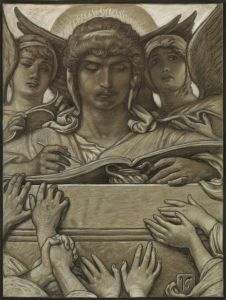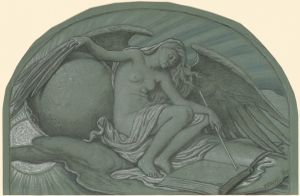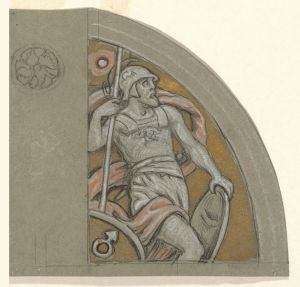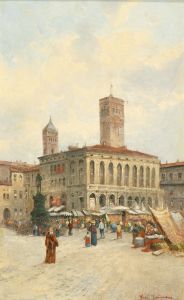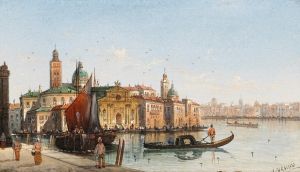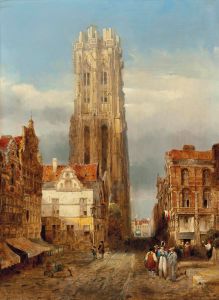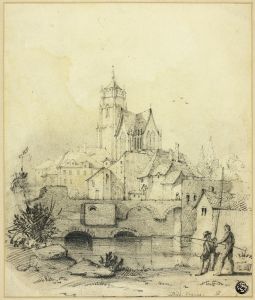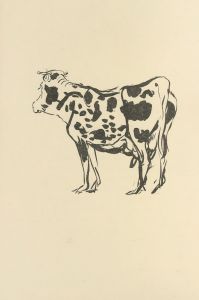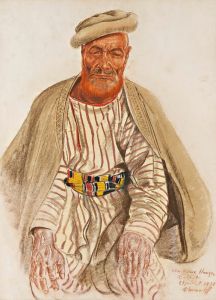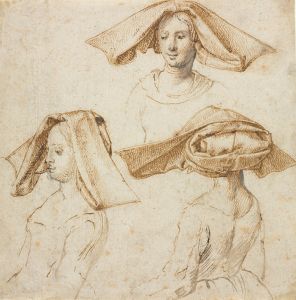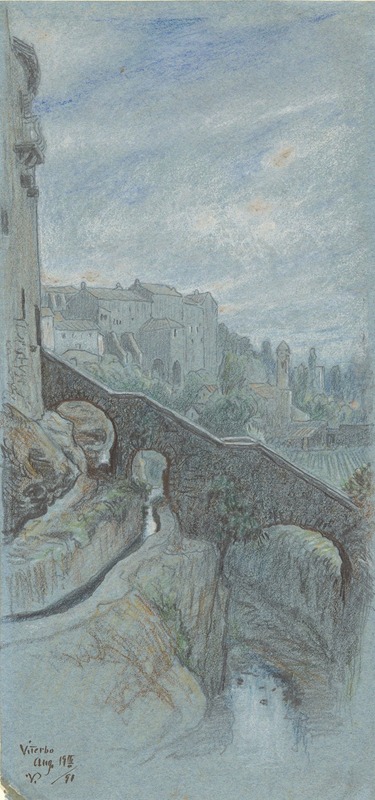
Viterbo
A hand-painted replica of Elihu Vedder’s masterpiece Viterbo, meticulously crafted by professional artists to capture the true essence of the original. Each piece is created with museum-quality canvas and rare mineral pigments, carefully painted by experienced artists with delicate brushstrokes and rich, layered colors to perfectly recreate the texture of the original artwork. Unlike machine-printed reproductions, this hand-painted version brings the painting to life, infused with the artist’s emotions and skill in every stroke. Whether for personal collection or home decoration, it instantly elevates the artistic atmosphere of any space.
Elihu Vedder was an American symbolist painter, born on February 26, 1836, in New York City. He is best known for his allegorical works and his illustrations for the Rubáiyát of Omar Khayyám. Vedder spent a significant portion of his career in Italy, where he was influenced by the Italian landscape and culture, which often found expression in his art.
"Viterbo" is one of Vedder's lesser-known works, and there is limited information available about this specific painting. Viterbo is a town in the Lazio region of central Italy, known for its medieval architecture and historical significance. It is possible that Vedder, during his time in Italy, visited Viterbo and was inspired by its scenery and history, leading to the creation of this artwork. However, without specific documentation or records, the exact inspiration and context behind the painting remain unclear.
Vedder's style often incorporated elements of symbolism and mysticism, characterized by a dreamlike quality and a focus on themes of life, death, and the human condition. His works frequently featured intricate details and a rich use of color, which may also be present in "Viterbo." Vedder's time in Italy was marked by his exploration of these themes, drawing from the rich cultural and historical backdrop of the country.
Throughout his career, Vedder exhibited his works in both the United States and Europe, gaining recognition for his unique approach and contribution to the symbolist movement. His paintings and illustrations often reflected his philosophical interests and his fascination with the metaphysical aspects of existence.
While "Viterbo" itself may not be as widely studied or documented as some of Vedder's other works, it is likely that it shares the thematic and stylistic characteristics that define his oeuvre. Vedder's ability to blend realism with symbolic elements allowed him to create works that resonated with the viewer on both an aesthetic and intellectual level.
In summary, while specific details about the painting "Viterbo" by Elihu Vedder are scarce, it can be situated within the broader context of Vedder's artistic journey and his time in Italy. His work continues to be appreciated for its depth, complexity, and the unique perspective it offers on the human experience.





